Abstract
While a number of workers have described the effects of blast waves upon the lung at both the macroscopic and light microscopic level, studies involving the use of the electron microscope have not been reported. In the experiments reported here the ultrastructural changes seen in lungs from rats exposed to a blast wave impacting on the right side of the chest are described. Considerable damage to the right lower lobe was observed which took the form of tearing of the inter-alveolar septa with capillary rupture and intra-alveolar haemorrhage. Changes to the alveolar epithelium and type II pneumocytes were also noted. Lesions were also identified in the left lung; these included intra-alveolar oedema with a minimal amount of interstitial oedema together with increased pinocytosis and isolated rupture of the alveolar epithelium. 'Ballooning' of the endothelium into the lumen of the capillary was also observed. There was an indication that lesions noted in the left lung at the electron microscopic level may be progressive in the first 24 hours following injury.
Full text
PDF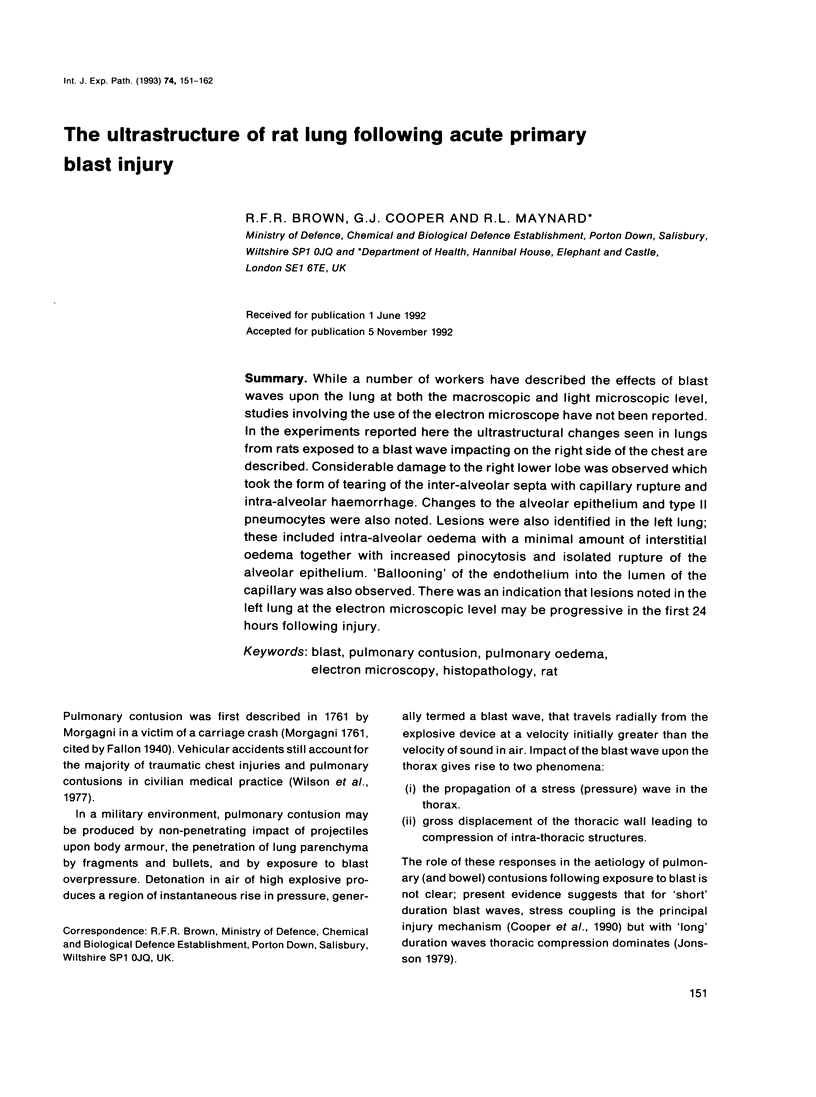
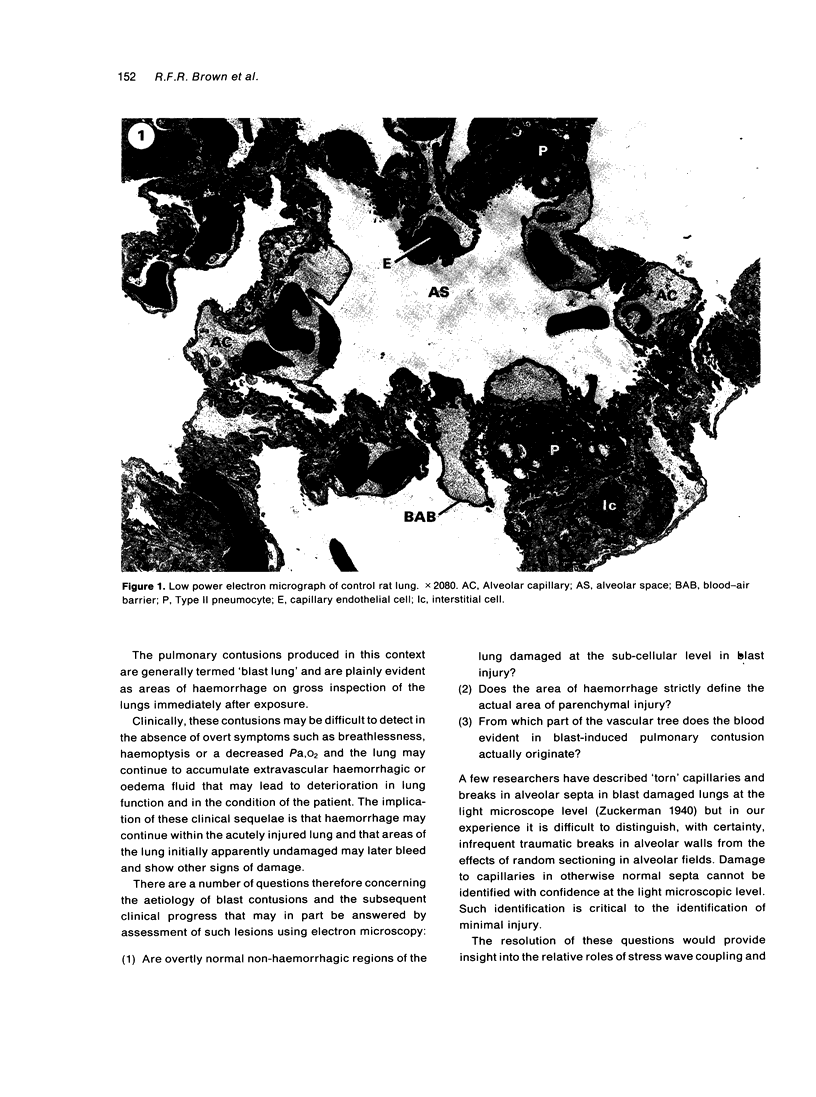
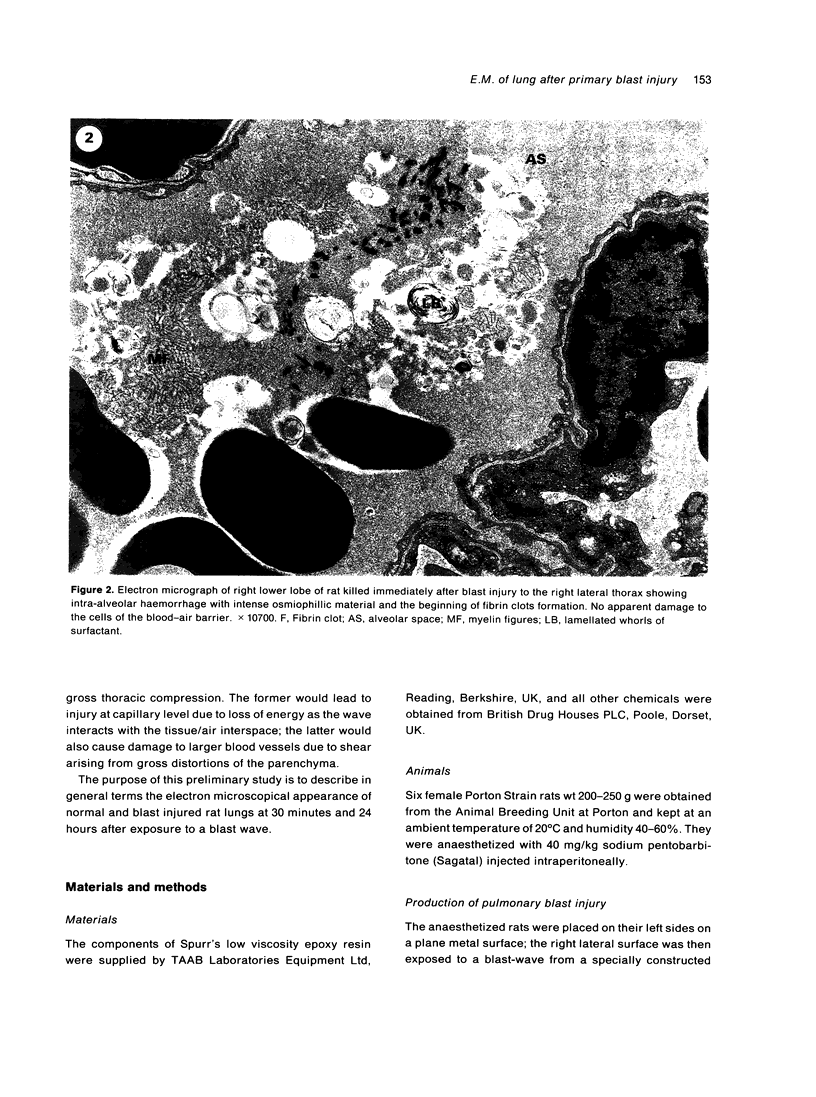
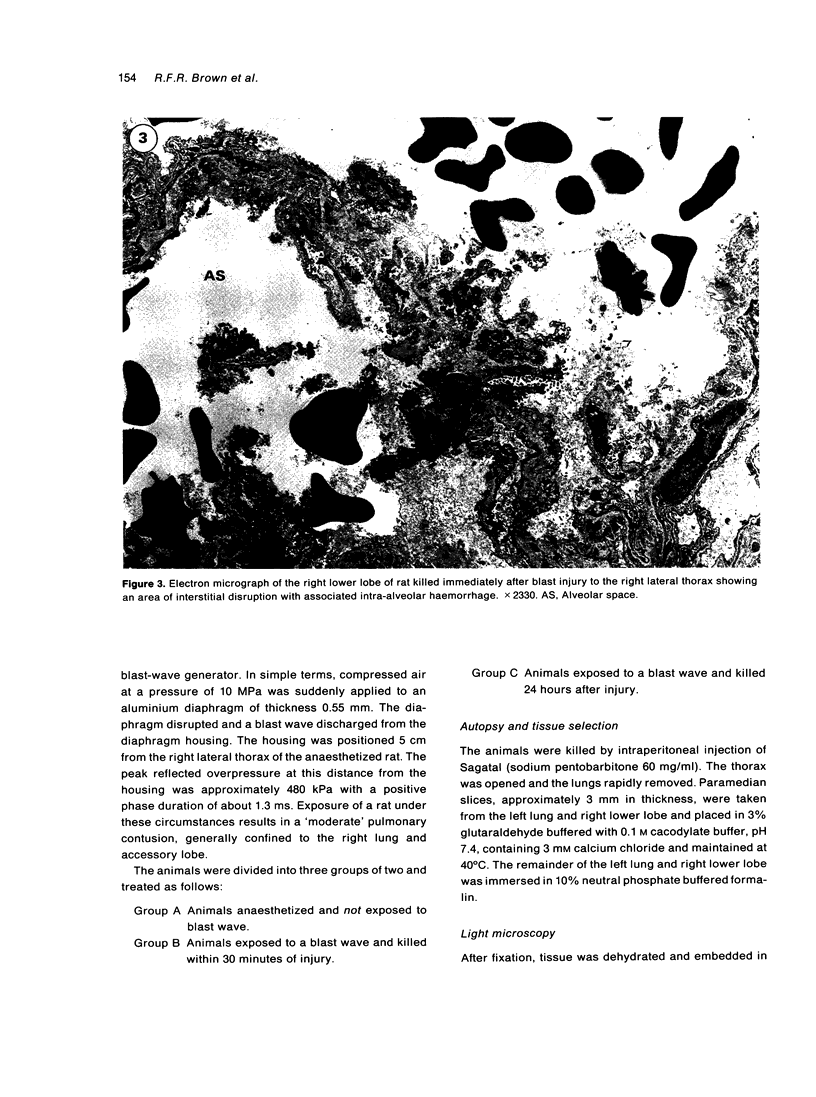

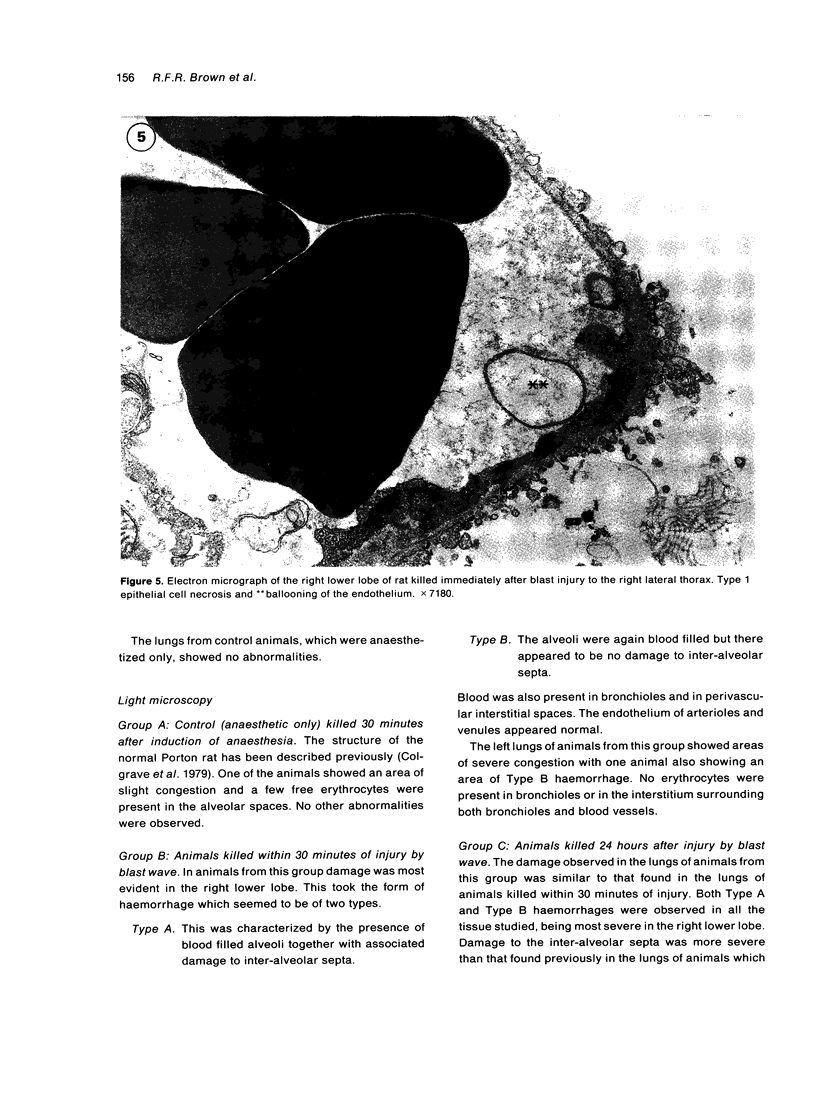
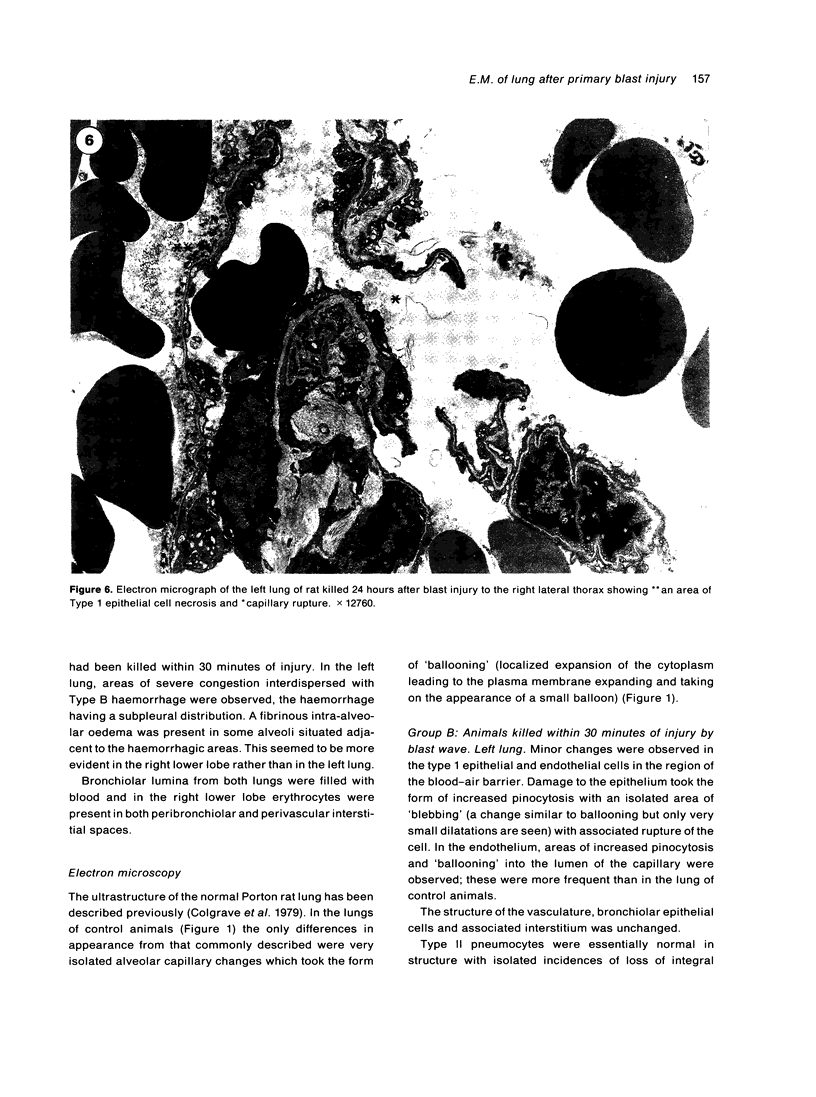
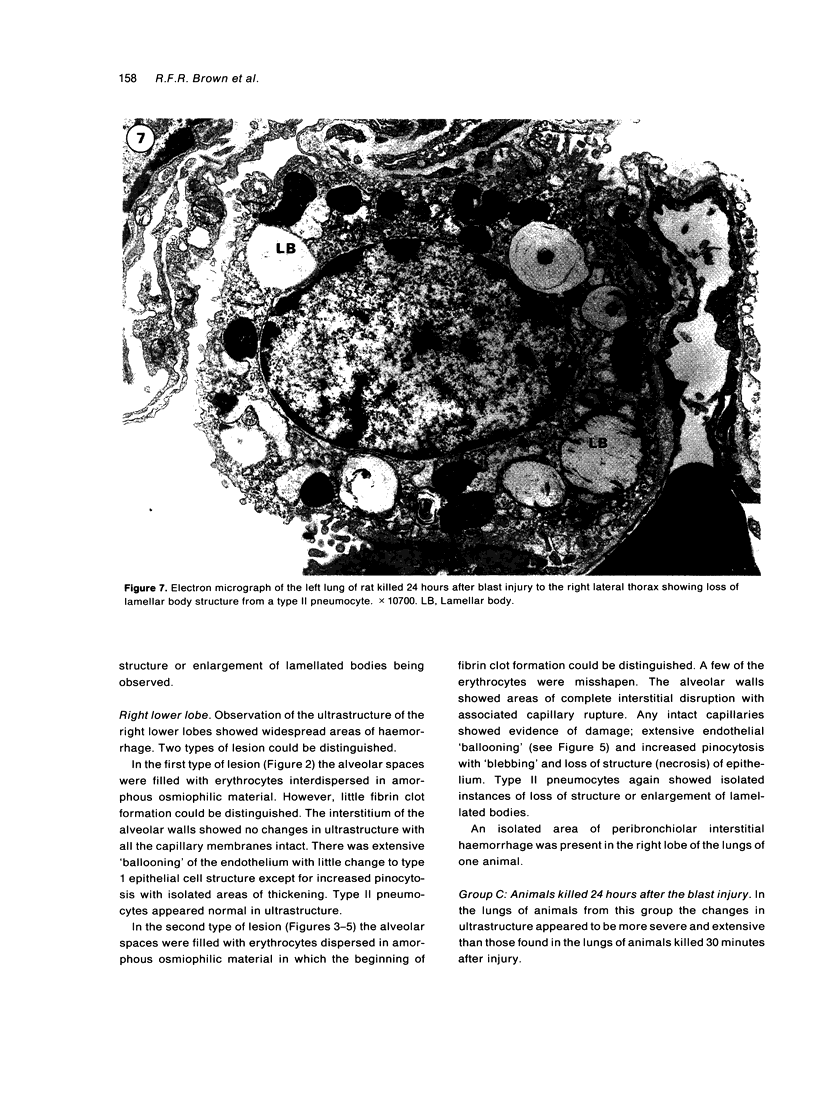
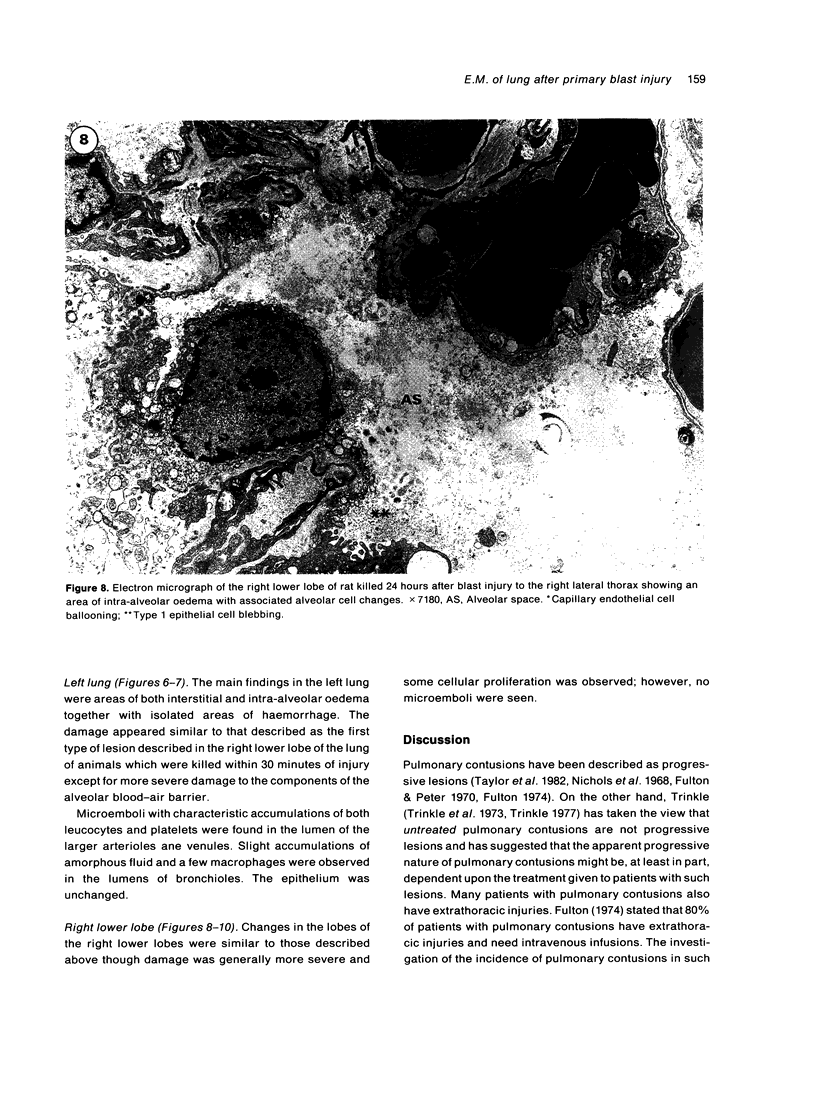
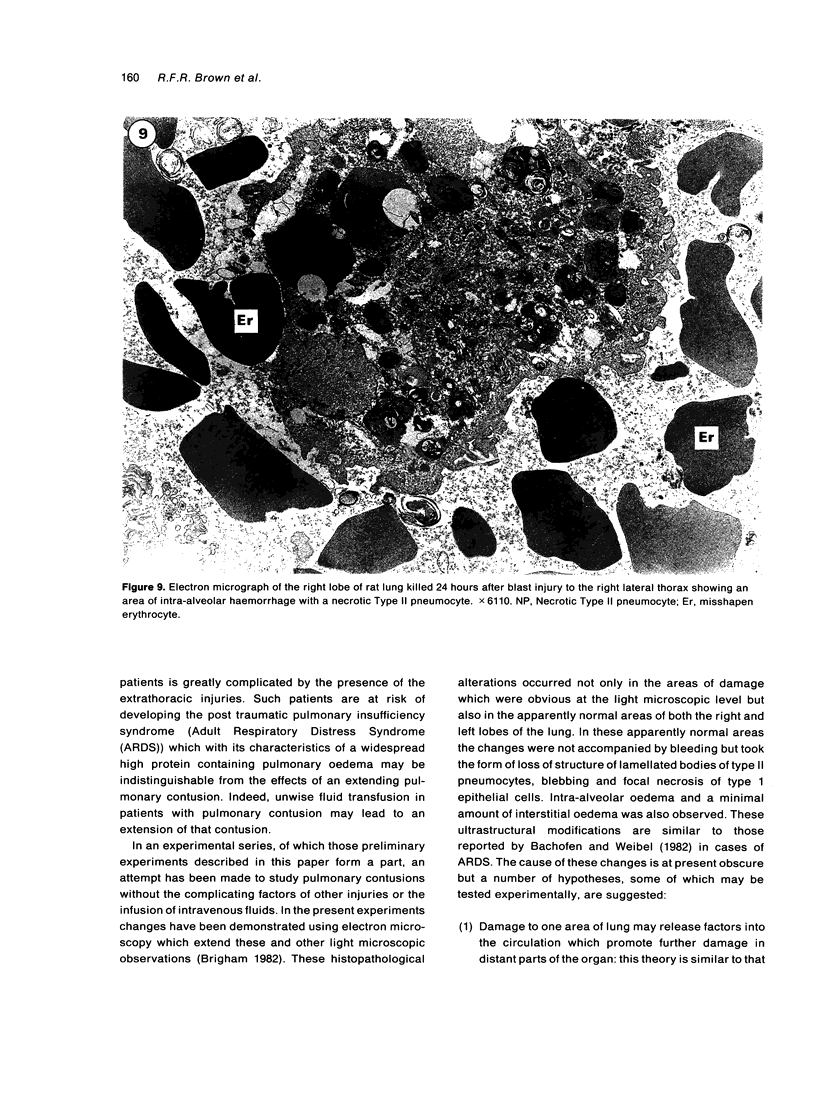
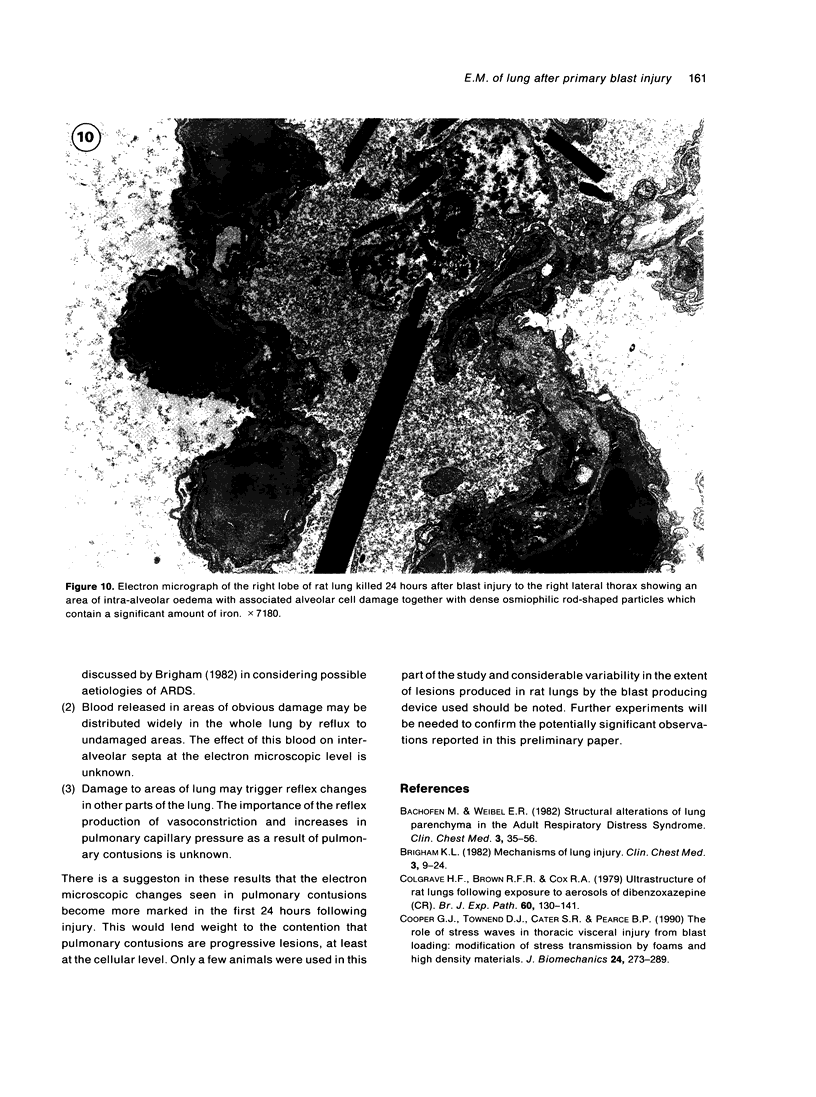
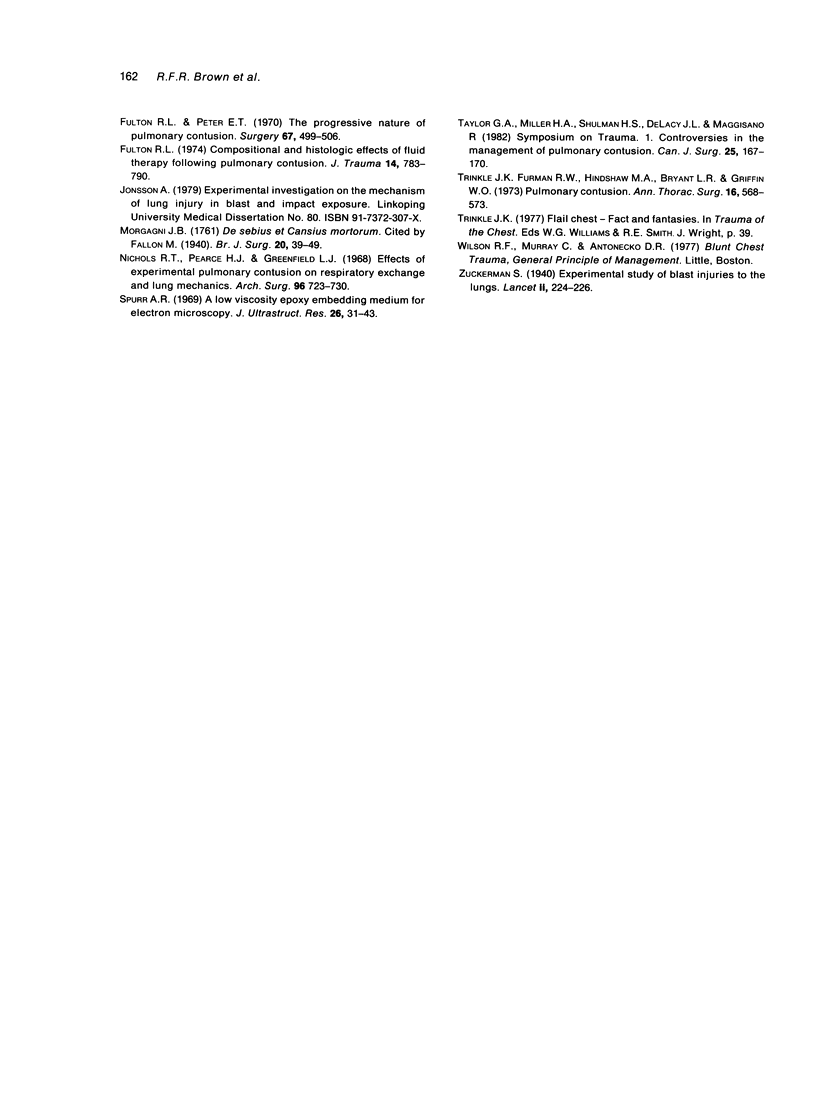
Images in this article
Selected References
These references are in PubMed. This may not be the complete list of references from this article.
- Bachofen M., Weibel E. R. Structural alterations of lung parenchyma in the adult respiratory distress syndrome. Clin Chest Med. 1982 Jan;3(1):35–56. [PubMed] [Google Scholar]
- Brigham K. L. Mechanisms of lung injury. Clin Chest Med. 1982 Jan;3(1):9–24. [PubMed] [Google Scholar]
- Colgrave H. F., Brown R. F., Cox R. A. Ultrastructure of rat lungs following exposure to aerosols of dibenzoxazepine (CR). Br J Exp Pathol. 1979 Apr;60(2):130–141. [PMC free article] [PubMed] [Google Scholar]
- Cooper G. J., Townend D. J., Cater S. R., Pearce B. P. The role of stress waves in thoracic visceral injury from blast loading: modification of stress transmission by foams and high-density materials. J Biomech. 1991;24(5):273–285. doi: 10.1016/0021-9290(91)90346-o. [DOI] [PubMed] [Google Scholar]
- Fulton R. L., Peter E. T. Compositional and histologic effects of fluid therapy following pulmonary contusion. J Trauma. 1974 Sep;14(9):783–790. doi: 10.1097/00005373-197409000-00008. [DOI] [PubMed] [Google Scholar]
- Fulton R. L., Peter E. T. The progressive nature of pulmonary contusion. Surgery. 1970 Mar;67(3):499–506. [PubMed] [Google Scholar]
- Nichols R. T., Pearce H. J., Greenfield L. J. Effects of experimental pulmonary contusion on respiratory exchange and lung mechanics. Arch Surg. 1968 May;96(5):723–730. doi: 10.1001/archsurg.1968.01330230031005. [DOI] [PubMed] [Google Scholar]
- Spurr A. R. A low-viscosity epoxy resin embedding medium for electron microscopy. J Ultrastruct Res. 1969 Jan;26(1):31–43. doi: 10.1016/s0022-5320(69)90033-1. [DOI] [PubMed] [Google Scholar]
- Taylor G. A., Miller H. A., Shulman H. S., DeLacy J. L., Maggisano R. Controversies in the management of pulmonary contusion. Can J Surg. 1982 Mar;25(2):167–170. [PubMed] [Google Scholar]
- Trinkle J. K., Furman R. W., Hinshaw M. A., Bryant L. R., Griffen W. O. Pulmonary contusion. Pathogenesis and effect of various resuscitative measures. Ann Thorac Surg. 1973 Dec;16(6):568–573. doi: 10.1016/s0003-4975(10)65037-0. [DOI] [PubMed] [Google Scholar]












